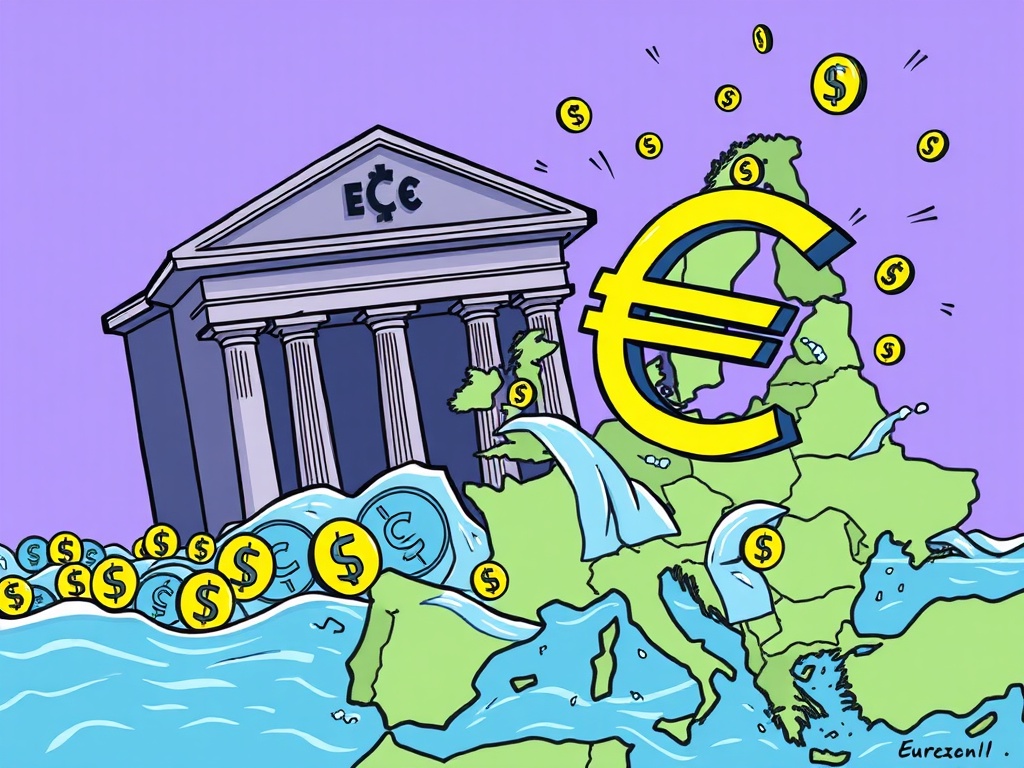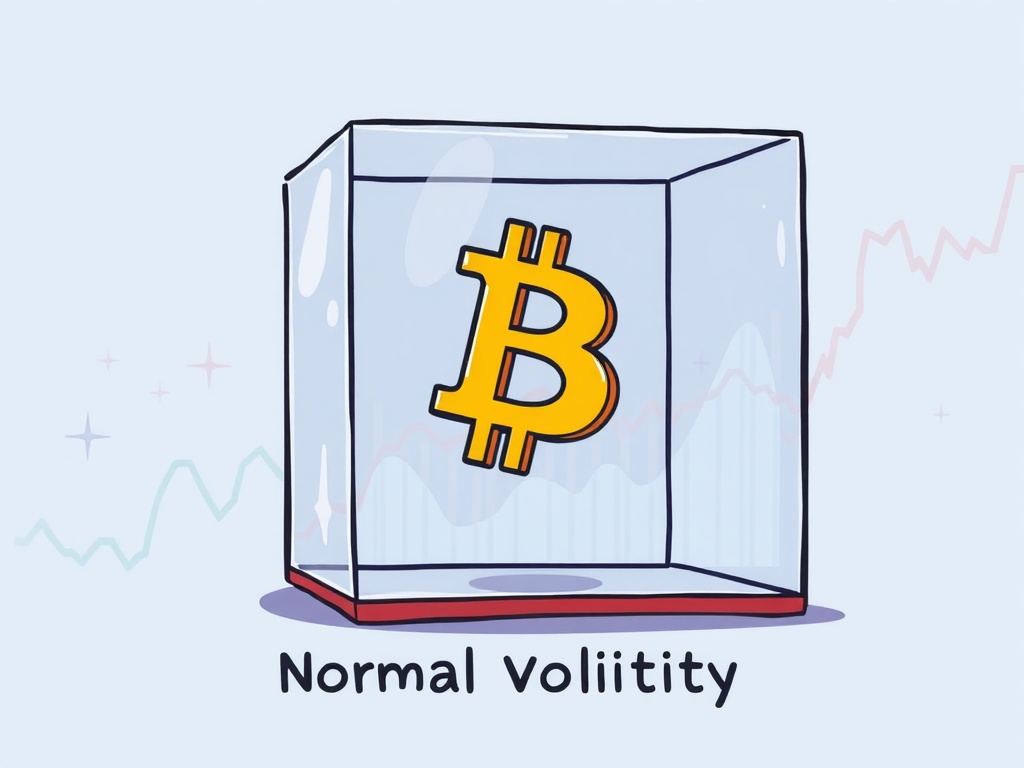BitcoinWorld

Urgent Warning: How Dollar-Backed Stablecoins Threaten Eurozone Monetary Control
The financial world is abuzz with a significant warning from one of Europe’s most influential institutions. The European Central Bank (ECB) has raised a red flag, cautioning that the escalating use of dollar-backed stablecoins could fundamentally undermine its grip on the Eurozone’s monetary policy. This isn’t just an academic concern; it’s a profound challenge to Europe’s financial independence and stability. As these digital assets gain traction, the ECB is grappling with how to maintain its ability to steer the economy and protect the euro’s standing.
The Looming Shadow of Dollar-Backed Stablecoins: What’s the Concern?
Imagine a scenario where a significant portion of everyday transactions in the Eurozone isn’t conducted in euros, but in digital currencies pegged to the U.S. dollar. This is the precise concern articulated by ECB adviser Jürgen Schaaf, as reported by the Financial Times. The core issue lies in the potential for widespread adoption of these particular stablecoins to push the region towards what economists call “dollarization.”
So, what exactly does this mean for the ECB and, by extension, for the citizens and businesses within the Eurozone? The implications are far-reaching:
- Erosion of Monetary Control: If a substantial amount of economic activity shifts away from the euro and into dollar-backed assets, the ECB’s traditional tools for managing the economy – like setting interest rates or injecting liquidity – become less effective. Think of it like trying to steer a ship with a rudder that’s only partially submerged.
- Impact on Inflation and Growth: The ability to control inflation and foster economic growth relies heavily on a central bank’s capacity to influence money supply and borrowing costs. A weakened grip due to dollarization could make it harder for the ECB to achieve these crucial objectives, potentially leading to greater economic volatility.
- Reduced Seigniorage: Central banks earn revenue (seigniorage) from issuing currency. If other currencies, including dollar-backed stablecoins, displace the euro, this revenue stream diminishes, impacting the bank’s operational capacity and public finances.
The ECB’s warning highlights a critical juncture where technological innovation in finance meets traditional monetary policy challenges. It’s not just about the digital nature of these assets, but their specific peg to a foreign currency – the dollar – that poses a unique risk to the Eurozone’s financial sovereignty.
Understanding ‘Dollarization’: Why is it a Threat to the Eurozone?
The term “dollarization” might sound technical, but its implications are quite straightforward and potentially alarming for any sovereign economy. In essence, it describes a situation where a country or region extensively uses a foreign currency – in this case, the U.S. dollar – for domestic transactions, savings, and even as a unit of account, often alongside or in place of its own national currency.
For the Eurozone, the threat of dollarization through widespread adoption of dollar-backed stablecoins is multifaceted:
- Loss of Economic Independence: When an economy becomes dollarized, its economic fate becomes increasingly tied to the monetary policy decisions of the foreign central bank (the U.S. Federal Reserve, in this instance). The ECB would lose its autonomy to respond to specific Eurozone economic conditions, such as a recession or inflationary pressures, through its own interest rate adjustments or quantitative easing measures.
- Reduced Crisis Response Capability: In times of financial crisis, a central bank’s ability to act as a lender of last resort and inject liquidity is paramount. If the financial system is heavily reliant on a foreign currency, the ECB’s capacity to provide emergency funding in euros would be limited, potentially exacerbating crises.
- Exchange Rate Volatility: While stablecoins are designed to be stable against their pegged currency, their widespread use could introduce new layers of complexity to exchange rate dynamics between the euro and the dollar, potentially impacting trade and investment.
This isn’t just a theoretical concern. History offers examples of economies that have experienced various degrees of dollarization, often leading to reduced domestic policy flexibility. The ECB’s concern is about proactively preventing such a scenario from unfolding in one of the world’s largest economic blocs.
The Stability Dilemma: Could Private Dollar-Backed Stablecoins Spark Financial Chaos?
Beyond the direct impact on monetary policy, the ECB also voiced a critical concern regarding the inherent risks associated with private stablecoins themselves. While they aim for stability, their underlying mechanisms and potential for collapse present a significant systemic threat.
Here’s why a collapse of private stablecoins is a worry for the financial system:
- Lack of Central Bank Backing: Unlike traditional currencies or even a future digital euro, private stablecoins are not backed by a central bank. Their stability relies on the reserves held by the issuing entity. If these reserves are mismanaged, insufficient, or illiquid, the stablecoin could lose its peg, leading to a “run” where users frantically try to redeem their tokens, similar to a bank run.
- Contagion Risk: In an interconnected financial system, the failure of a large, widely used stablecoin could trigger a domino effect. Institutions holding these stablecoins, or those whose business models rely on them, could face significant losses, potentially spreading instability across markets.
- Regulatory Gaps: The regulatory framework for stablecoins is still evolving. This can create vulnerabilities, as there might not be adequate consumer protection, transparency requirements, or robust oversight mechanisms in place to prevent or manage a collapse effectively.
The Terra-Luna collapse in 2022 served as a stark reminder of how quickly stablecoin ecosystems can unravel and the broader market ripple effects. While TerraUSD was algorithmic, the ECB’s warning extends to all private stablecoins, emphasizing the need for robust regulation and a strong, centrally-backed alternative to mitigate these risks.
The Digital Euro: Europe’s Shield Against Dollar-Backed Stablecoins and for Monetary Sovereignty
Given these pressing concerns, the ECB isn’t just sounding an alarm; it’s also actively working on a solution: the digital euro. This initiative is presented as a crucial strategic move to preserve European monetary sovereignty in the face of the growing influence of foreign digital currencies, particularly dollar-backed stablecoins.
So, how would a digital euro address these challenges?
- Preserving Monetary Autonomy: A digital euro, as a central bank digital currency (CBDC), would be issued and backed by the ECB. This ensures that the Eurozone maintains full control over its money supply, interest rates, and financial stability tools, regardless of the proliferation of other digital assets. It would serve as a robust, official digital alternative to private stablecoins.
- Ensuring Financial Stability: As a direct liability of the ECB, a digital euro would carry no credit risk, unlike private stablecoins. This inherent safety would provide a stable, reliable foundation for digital payments, reducing the risk of runs or collapses that could disrupt the financial system.
- Promoting Innovation and Competition: While preserving sovereignty, a digital euro could also foster innovation in the payments landscape. It would provide a secure and efficient platform upon which private companies could build new services, encouraging competition and improving payment experiences for citizens and businesses.
- Strengthening the Euro’s International Role: In an increasingly digital world, having a sovereign digital currency could bolster the euro’s standing as a major international currency, ensuring its continued relevance in global trade and finance.
The development of the digital euro is therefore not merely a technological upgrade but a strategic imperative. It’s about ensuring that Europe retains control over its economic destiny in an evolving digital financial ecosystem.
Beyond the Headlines: What This Means for You and the Future of Money
The ECB’s warning about dollar-backed stablecoins and its push for a digital euro might seem like high-level financial discussions, but their implications can eventually trickle down to everyday life. For individuals and businesses within the Eurozone, these developments could shape the future of how we pay, save, and interact with money.
Here are some actionable insights and what to consider:
- Awareness is Key: Understanding the differences between various digital assets – cryptocurrencies, private stablecoins, and potential CBDCs like the digital euro – is crucial. Each carries different levels of risk, stability, and regulatory oversight.
- The Future of Payments: Expect a continued evolution in payment methods. While cash isn’t disappearing overnight, digital payments, including potentially a digital euro, are likely to become more integrated into daily transactions.
- Regulatory Landscape: Keep an eye on regulatory developments concerning stablecoins and other digital assets. Stricter regulations are likely to emerge as authorities seek to mitigate risks and protect consumers.
- Diversification: As with any investment or financial holding, diversification remains a wise strategy. Relying too heavily on any single, unregulated digital asset could expose you to unforeseen risks.
The debate around dollar-backed stablecoins versus a digital euro underscores a fundamental question: who controls the money we use, and what are the implications for economic stability and national sovereignty? The ECB’s stance is clear: maintaining control over its monetary policy is paramount for the Eurozone’s future prosperity and stability.
In conclusion, the European Central Bank’s stark warning about dollar-backed stablecoins is a wake-up call, highlighting the critical challenge they pose to the Eurozone’s monetary control and financial stability. The potential for “dollarization” and the inherent risks of private stablecoin collapses underscore the urgent need for a robust, centrally-backed digital currency. The proposed digital euro emerges not just as a technological advancement but as a strategic necessity – a vital tool to safeguard European monetary sovereignty, ensure financial stability, and pave the way for a secure and independent digital financial future for the continent. As the digital currency landscape evolves, the choices made today will profoundly shape tomorrow’s economic realities.
Frequently Asked Questions (FAQs)
1. What are dollar-backed stablecoins?
Dollar-backed stablecoins are a type of cryptocurrency designed to maintain a stable value, typically pegged 1:1 to the U.S. dollar. This stability is achieved by holding an equivalent amount of reserves (like cash, short-term government bonds, or other assets) for each stablecoin in circulation.
2. How do dollar-backed stablecoins threaten the Eurozone’s monetary control?
If widely adopted, dollar-backed stablecoins could lead to “dollarization” in the Eurozone. This means economic activity would increasingly shift to the U.S. dollar, making it harder for the ECB to effectively set interest rates, manage liquidity, and control inflation, thus eroding its monetary policy autonomy.
3. What is “dollarization” in the context of stablecoins?
Dollarization refers to a situation where a country or region extensively uses a foreign currency (in this case, the U.S. dollar via stablecoins) for domestic transactions, savings, and accounting, either alongside or in place of its own national currency. This can lead to a loss of economic independence for the local central bank.
4. How does a digital euro help preserve monetary sovereignty?
A digital euro, as a central bank digital currency (CBDC) issued by the ECB, would provide a sovereign, centrally-backed digital alternative to private stablecoins. This ensures the ECB retains full control over its money supply and financial stability tools, safeguarding Europe’s economic independence in the digital age.
5. What are the risks associated with private stablecoins?
Private stablecoins carry risks such as potential reserve mismanagement, insufficient liquidity, and a lack of central bank backing. A collapse of a large private stablecoin could trigger a “run” and cause widespread financial instability due to contagion risks and evolving regulatory gaps.
6. Will the digital euro replace cash?
The ECB has stated that a digital euro is intended to complement, not replace, cash. It would offer an additional payment option for citizens and businesses, ensuring that public money remains available in digital form alongside physical banknotes and coins.
If you found this deep dive into the ECB’s concerns and the future of digital currency insightful, please consider sharing this article with your network. Your engagement helps spread crucial awareness about the evolving financial landscape and the importance of monetary sovereignty in the digital age!
To learn more about the latest crypto market trends, explore our article on key developments shaping stablecoins institutional adoption.
This post Urgent Warning: How Dollar-Backed Stablecoins Threaten Eurozone Monetary Control first appeared on BitcoinWorld and is written by Editorial Team





